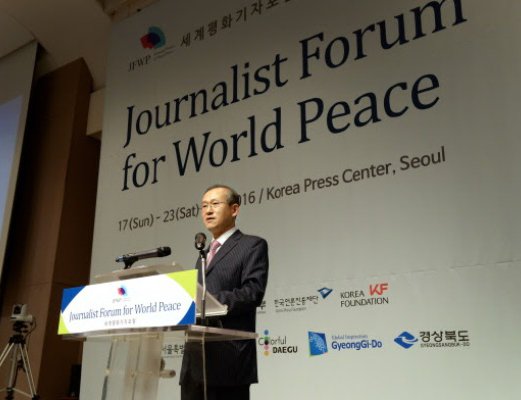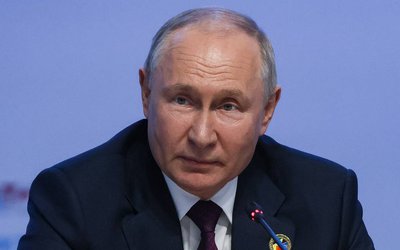
By Lim Sung-nam, Vice Minister of Foreign Affairs
I am pleased to have a chance to share my thoughts with you on one of the most pressing security issues the world faces: the North Korean nuclear issue.
At the outset, let me provide you with a quick synopsis of the previous efforts to address the North Korean nuclear problems and where we stand today.
Some of you might recall the year 1993, when the North Korean nuclear issue came to the forefront with Pyongyang’s announcement of its withdrawal from the NPT. There have been two paths taken in the international efforts to resolve this issue ever since.
The first has been “negotiation.”
Since the first North Korean nuclear crisis broke out in the early 1990s, there have been repeated breakthroughs and breakdowns in the negotiation process. The first breakthrough was made when the United States and North Korea signed the Agreed Framework in 1994 that obliged Pyongyang to freeze and eventually dismantle its nuclear program in exchange for two light-water reactors. Its implementation, however, came to a halt in 2002 after North Korea’s acknowledgement of its uranium enrichment program.
The second breakthrough came in 2005, when the Six Parties agreed on the September 19 Joint Statement in Beijing that provided a step-by-step roadmap leading to the verifiable resolution of the North Korean nuclear issue on a reciprocal basis. But the Six-Party process has been stalled since December 2008 due to the disagreement over the question of how to verify North Korea’s declaration of its nuclear programs.
Following the second breakdown, North Korea continued to behave in a hostile manner by conducting a long-range missile launch in April 2009, its second nuclear test in May 2009, the attack on our Navy Ship Cheonan in March 2010, and the shelling of Yeonpyeong island in November 2010.
Despite these provocations, there had still been some hope of a negotiated settlement of the North Korean nuclear issue. It was against this backdrop that Washington, in close coordination with Seoul, reached the so-called ‘Leap Day deal’ with Pyongyang on February 29th, 2012, which basically stipulated the initial measures to be taken by North Korea for denuclearization, such as a moratorium on long-range missile launches, nuclear tests and nuclear activities at Yongbyon as well as the return of IAEA inspectors.
Although this deal was initially welcomed as ‘a modest first step in the right direction’ towards the resumption of the Six-Party Talks, only 16 days after the announcement of the deal, North Korea made public its plan to launch a long-range missile. Notwithstanding the calls from the international community not to go ahead with the announced missile launch, North Korea indeed fired the missile on April 13th, which seriously betrayed the belief that there was room for bargaining of the North Korean nuclear issue.
To make a long story short, our efforts to bring North Korea to the right side of history through negotiation have not achieved the desired outcome yet. Figuratively speaking, the international community may have been able to bring a horse called North Korea to water, but it could not make the horse drink water. In other words, it is the horse that has to make the decision to drink the water.
The other way has been “pressure.”
Whenever Pyongyang has resorted to provocations, there have been strenuous efforts to put pressure on North Korea. In response to North Korea’s nuclear tests and long-range missile launches, the UN Security Council adopted a number of resolutions; Resolutions 1695 and 1718 in 2006, Resolution 1874 in 2009, Resolutions 2087 and 2094 in 2013.
All these Security Council resolutions adopted in the wake of the three past nuclear tests and the previous missile launches, however, failed to deter Pyongyang from testing a fourth nuclear weapon in January, and launching another long-range missile in February of this year.
North Korea is now the only country in the world which has conducted nuclear tests in the 21st century and officially declared itself a nuclear weapon state in its constitution. North Korea developed nuclear weapons program within the NPT regime and then announced its withdrawal from both the NPT and the IAEA. Furthermore, the entire state apparatus of North Korea is directly engaged in hard currency earning activities and is functioning as a giant WMD development machine.
Given that North Korea never stopped developing its nuclear weapons program under the past Security Council sanctions, it was clear to the international community, including the Security Council, early this year that simply a piecemeal strengthening of previous sanctions would not put a brake on Pyongyang ’s nuclear ambitions.
That was the rationale behind the unanimous adoption of the new Security Council Resolution 2270 imposing unprecedentedly tough sanctions upon North Korea in March. And that’s also why we made the painful decision to shut down the Kaesong Industrial Complex the previous month.
It is time to make the North Korean regime clearly realize that efforts to sustain itself by exploiting its people and concentrating resources on nuclear and missile development will be futile and self- destructive.
We can no longer afford to be pushed around by North Korea’s deceit and intimidation. Furthermore, if unchecked, its nuclear program will pose an even greater threat not only to the survival of the Korean people, but indeed to the stability of Northeast Asia and peace around the globe.
In a nutshell, the leadership in Pyongyang must be pressed much harder until it changes its fundamental calculation regarding the value of its nuclear arsenal and delivery capabilities.
Recently, however, Pyongyang openly threatened a pre-emptive nuclear strike against the Republic of Korea and the U.S. Its intimidations went too far to the extent that the North Korean media revealed the propaganda footage of the blowing up of the Blue House and the White House.
Last Friday, North Korea further challenged the international community by firing a ballistic missile, reportedly an intermediate range ballistic missile(IRBM). Although this missile launch was a failure, it constituted a clear violation of Security Council resolutions, including the newly adopted 2270. Faced with this aborted launch, the Security Council, of course, urged Pyongyang to refrain from further provocations and made it clear that further significant measures will be taken in the event of another nuclear test or missile launch.
In response to all these threats and provocations, the international community should send a clear message to North Korea that it must stop violating Security Council resolutions and choose the path toward denuclearization. In this sense, the recent Nuclear Security Summit held in Washington D.C. was a very meaningful occasion where President Park, together with the leaders from the U.S., Japan and China, reaffirmed their commitment to the full and faithful implementation of the UN Security Council resolutions in order to make North Korea realize that even for their own survival, there is no other way out but to return to the path of denuclearization.
Being an optimist as well as a realist, I do hope and believe that we can ultimately bring North Korea to the right side of history. My firm belief comes from the fact that the international community, including China and Russia, has never been more united in the determination to counter North Korea’s nuclear and missile threat. Now is the time to create an environment in which North Korea cannot survive without changing its calculation. In short, it is the world versus North Korea.
In this vein, each and every journalist in this hall is also strongly encouraged to join the global campaign to remind North Korea as poignantly as possible that its pursuit of nuclear weapons and missiles will serve no one’s interests, including its own.
All in all, the international community has begun an unprecedentedly full-fledged campaign against North Korean nuclear weapons and missile programs through the adoption of the Security Council resolution 2270. In a sense, the odyssey has just started and the road for bringing North Korea to the right side of history could be bumpy as well. We should remember, however, that the North Korean nuclear issue which has plagued Northeast Asia and beyond for more than 20 years is not a problem created by Mother Nature. After all, it is a man-made issue and therefore I do believe that we can find a solution to this problem.
In this context, let me conclude by quoting the words of Winston Churchill whom I came to respect more after the recent tour in London. “A pessimist sees the difficulty in every opportunity; an optimist sees the opportunity in every difficulty.”
Lim Sung-nam is vice minister of Foreign Affairs of South Korea. Excerpts of his statement delivered atJournalist Forum for World Peace in Seoul.
- TANAHU HYDROPOWER PROEJCT: A Significant Achievement
- Apr 15, 2024
- AMBASSADOR HANAN GODAR: Sharing Pain With A Nepali Family
- Mar 30, 2024
- VISIT OF KfW AND EIB TO NEPAL : Mission Matters
- Mar 25, 2024
- NEPAL BRITAIN SOCIETY: Pratima Pande's Leadership
- Mar 24, 2024
- NEPAL ARMY DAY: Time To Recall Glory
- Mar 15, 2024















